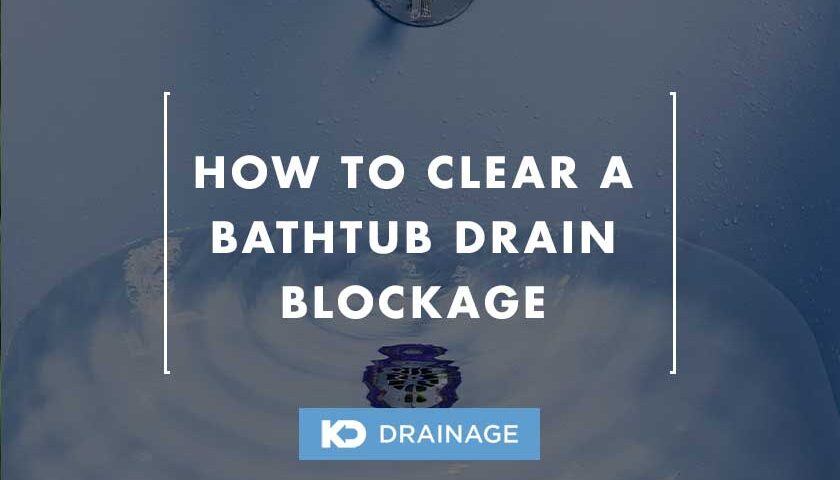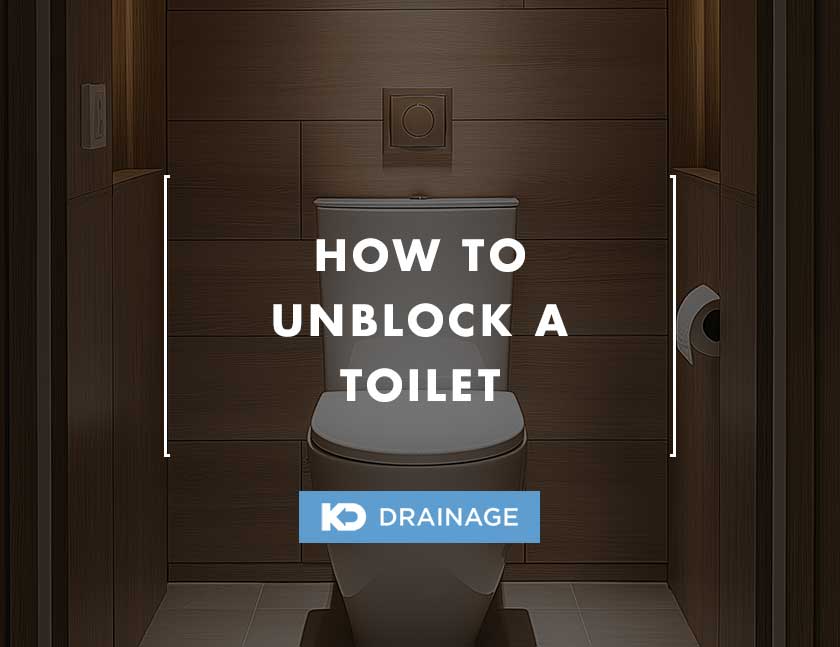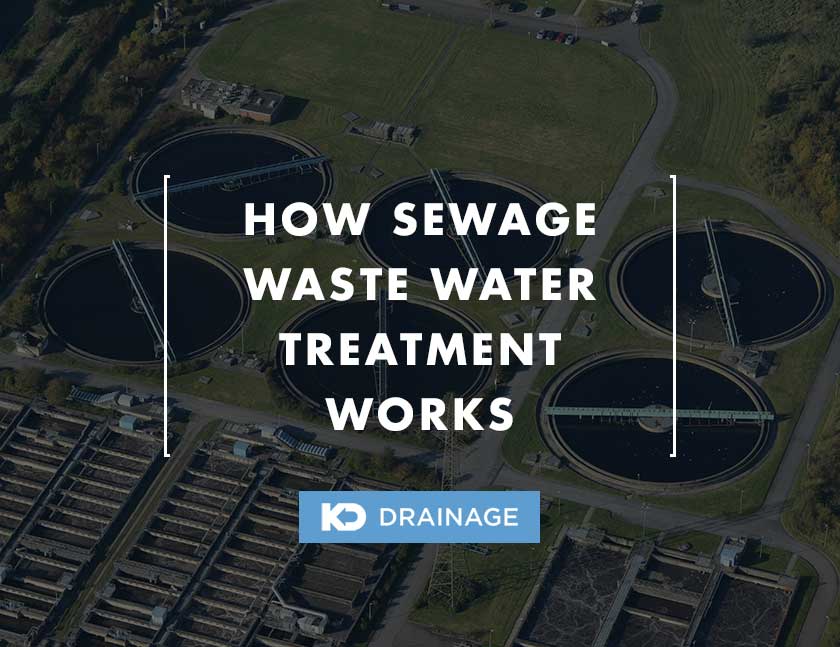
How Much Does a CCTV Drain Survey Cost?
1 March 2025How to Clear a Bathtub Drain Blockage
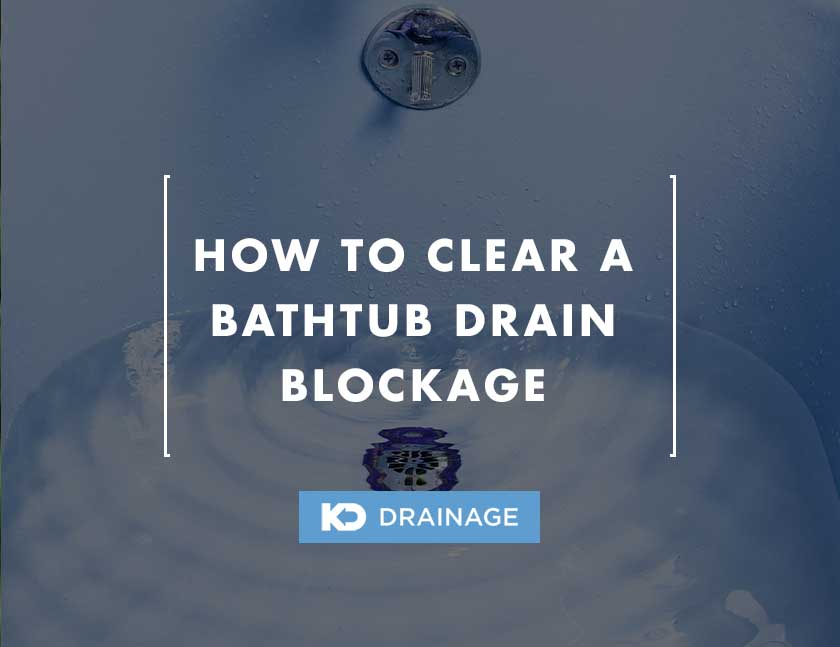
A bathtub drain blockage can be frustrating and inconvenient.
It can cause water to drain slowly or not drain at all, leaving you with standing water after a bath or shower.
This can lead to unpleasant odours, soap scum buildup, and even potential water damage if left untreated.
Fortunately, most bathtub drain blockages can be cleared using simple household tools and ingredients.
Whether the blockage is caused by hair, soap scum, or other debris, there are several effective methods to fix the issue.
This guide article will explain different ways to clear a clogged bathtub drain, helping you restore proper drainage quickly and easily.
Table of Contents
What Causes a Bathtub Drain Blockage?
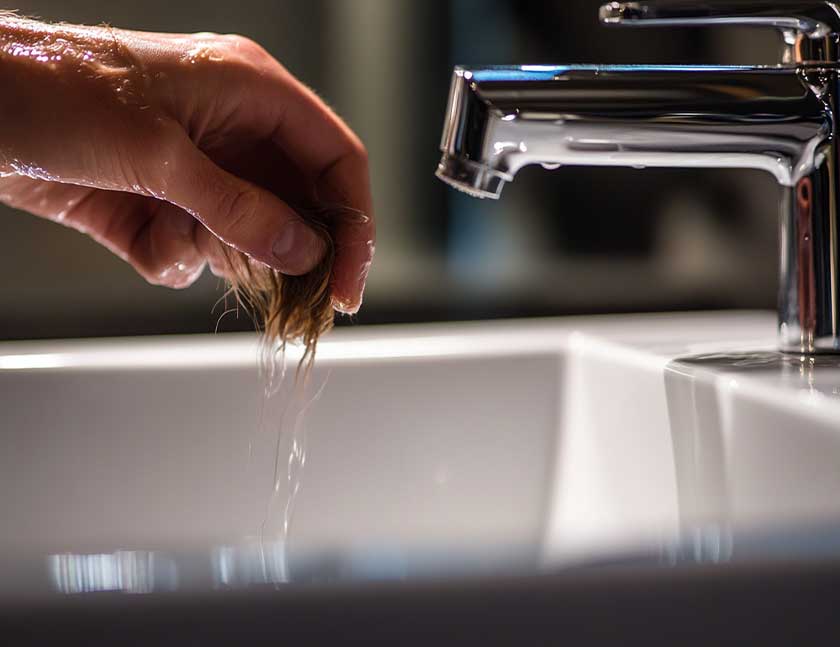
A blocked bathtub drain can be caused by various factors.
Understanding the common causes can help prevent future clogs and keep your drainage system running smoothly.
Hair Buildup
Hair is one of the most common causes of bathtub drain blockages.
As you wash, loose strands fall out and travel down the drain.
Over time, hair tangles and forms clumps that trap soap, dirt, and other debris, creating a stubborn clog.
Soap Scum Accumulation
Soap can leave behind a sticky residue called soap scum.
This builds up inside the pipes, narrowing the passage for water to flow through.
Soap scum also hardens over time, making it difficult to remove.
Dirt and Dead Skin Cells
Bathtubs are used for washing off dirt, oils, and dead skin cells.
These substances mix with water and can settle inside the drain, gradually forming a blockage.
Grease and Oils from Bath Products
Many bath products, such as shampoos, conditioners, and body oils, contain grease-like substances.
These can stick to the walls of your pipes, creating a layer that traps other debris and leads to clogs.
Limescale from Hard Water
If you live in an area with hard water, limescale can build up in your pipes.
Limescale deposits restrict water flow and make it easier for hair and soap to collect inside the drain.
Small Objects and Foreign Items
Sometimes, small objects like bottle caps, razor covers, or jewellery accidentally fall into the drain.
These items can block the water flow and cause serious clogs that require professional help to remove.
How to Clear a Bathtub Drain Blockage With a Plunger
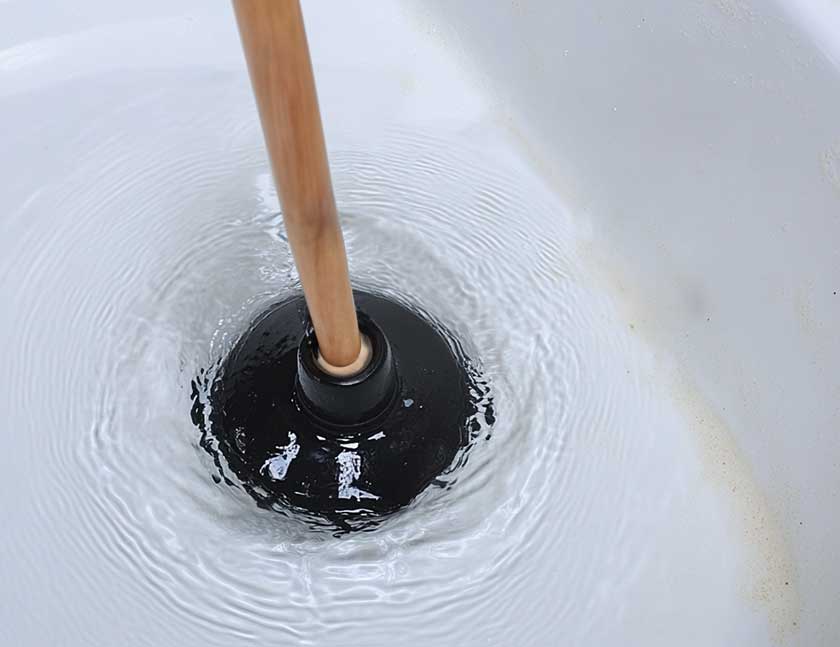
A plunger is a simple and effective tool for clearing bathtub drain blockages.
It works by creating suction to dislodge clogs caused by hair, soap scum, and other debris.
Knowing exactly how to use a plunger can make it a very effective tool for blocked drains.
Steps to Use a Plunger to Clear a Bathtub Drain Blockage
Remove the drain cover
If possible, take off the cover to access the blockage.
Fill the bathtub with water
Add a few inches of water to help create suction.
Position the plunger
Place it firmly over the drain, ensuring a tight seal.
Plunge vigorously
Push down and pull up quickly for about 30 seconds.
Check the drainage
Remove the plunger and see if the water drains faster.
Repeat if necessary
If the blockage remains, try again a few times.
How to Clear a Bathtub Drain Blockage With Drain Snake
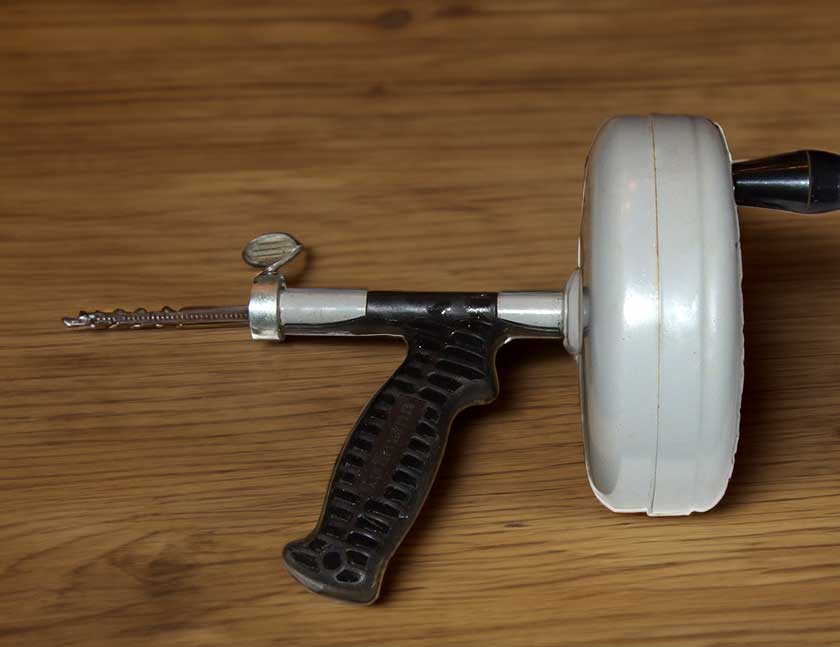
Source: Wikipedia
A drain snake, also called a plumber’s auger, is a flexible tool used to remove stubborn blockages deep in the drain.
In the hands of someone who knows how to use a drain snake, it is great for dealing with clogs caused by hair buildup.
Steps to Use a Drain Snake to Clear a Bathtub Drain Blockage
Remove the drain cover
Take off any cover or stopper to access the pipe.
Insert the drain snake
Push the flexible end into the drain opening.
Rotate and push
Turn the handle while gently pushing the snake deeper.
Break up the blockage
When you feel resistance, twist the snake to catch hair and debris.
Pull out the debris
Slowly remove the snake, bringing the clog with it.
Flush with hot water
Pour hot water down the drain to clear any remaining residue.
How to Clear a Bathtub Drain Blockage With Bleach
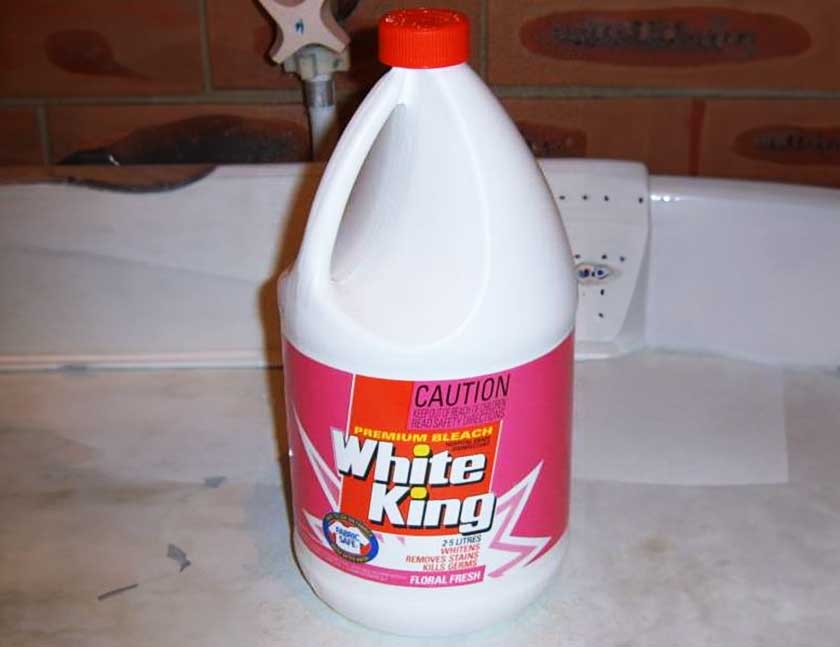
Source: Wikipedia
Bleach is a powerful cleaning agent that can help dissolve organic matter, such as hair and soap scum, in a blocked bathtub drain.
It also kills bacteria and removes bad odours.
However, bleach is best for minor clogs and should be used carefully.
Steps to Use Bleach to Clear a Bathtub Drain Blockage
Ensure good ventilation
Open windows or turn on a fan to reduce fumes.
Pour the bleach
Measure about 250ml (one cup) of undiluted bleach and pour it down the drain.
Let it sit
Allow the bleach to work for at least 30 minutes.
Rinse with hot water
Slowly pour hot water down the drain to flush out the blockage.
How to Clear a Bathtub Drain Blockage With Drain Unblockers
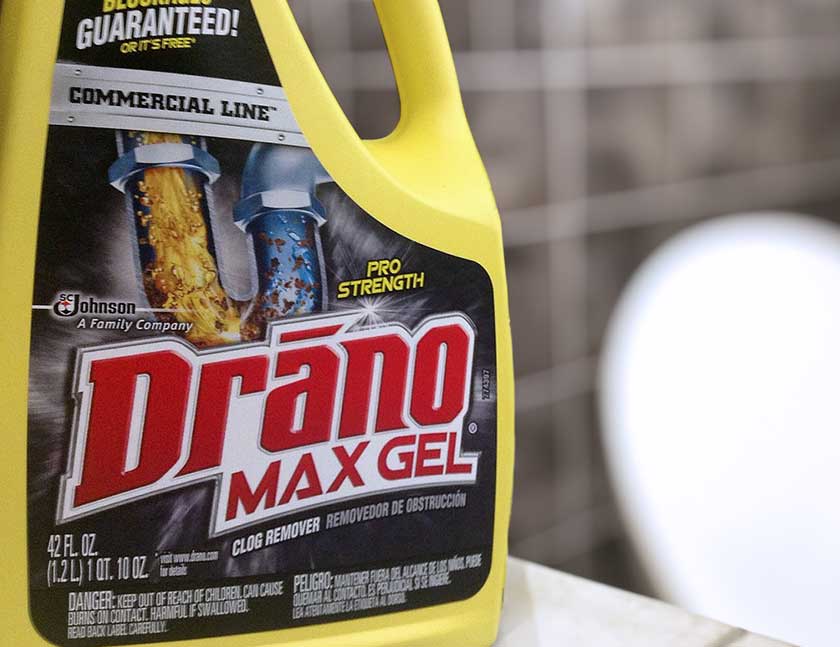
Source: Wikipedia
Chemical drain unblockers are a quick way to dissolve stubborn clogs in a bathtub drain.
They break down hair, soap scum, and grease buildup.
However, frequent use can damage pipes, so use them as a last resort.
Steps to Use a Drain Unblocker to Clear a Bathtub Drain Blockage
Read the instructions
Different products have specific guidelines, so always check the label.
Pour the correct amount
Carefully measure and pour the recommended amount down the drain.
Let it work
Leave the unblocker in the drain for the suggested time (usually 15–30 minutes).
Flush with hot water
Rinse the drain with hot water to clear away the dissolved blockage.
How to Clear a Bathtub Drain Blockage With Washing Up Liquid or Washing Powder
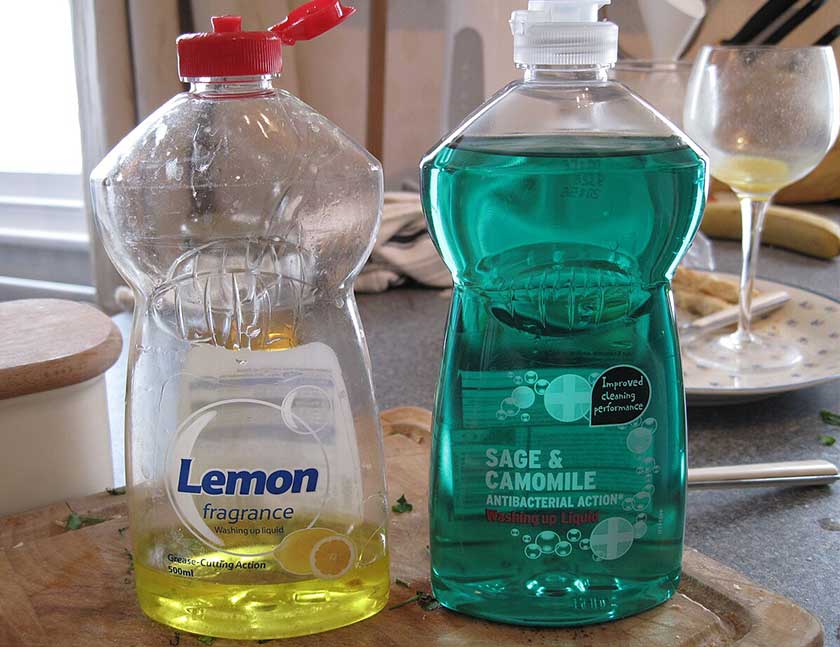
Source: Wikipedia
Washing up liquid and washing powder can help clear minor bathtub drain blockages by breaking down grease and loosening debris.
This method is safe for pipes and works best for clogs caused by soap scum and oils.
Steps to Use Washing Up Liquid or Washing Powder to Clear a Bathtub Drain Blockage
Pour the detergent
Add half a cup of washing up liquid or washing powder directly into the drain.
Boil water
Heat a kettle of water until it reaches a near-boiling temperature.
Pour the hot water
Slowly pour the hot water down the drain to dissolve the blockage.
Let it sit
Allow the mixture to work for a few minutes.
Test the drainage
Run water to check if the blockage has cleared.
How to Clear a Bathtub Drain Blockage With Vinegar and Baking Soda
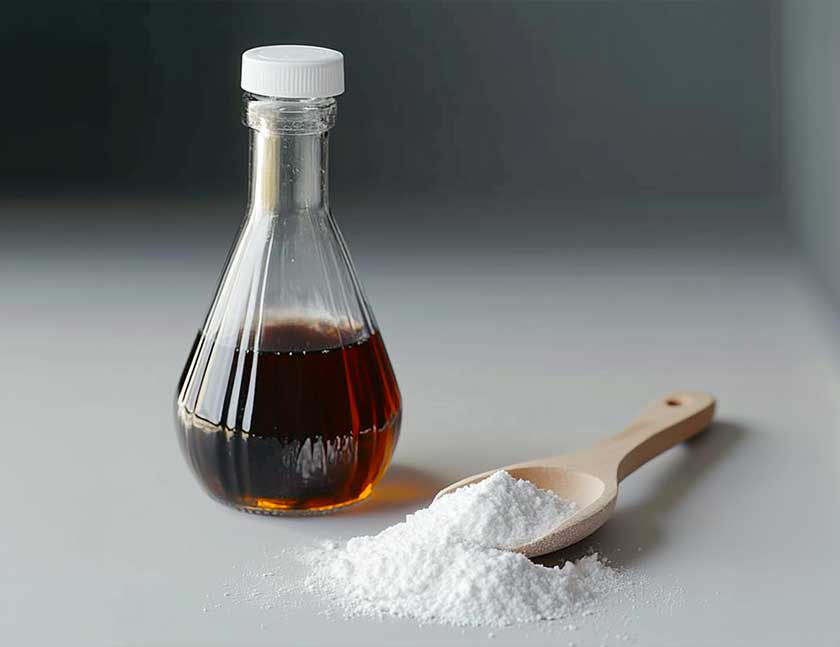
Vinegar and baking soda can effectively clear minor bathtub drain blockages by breaking down soap scum and debris.
This natural method is pipe-safe and eco-friendly, ideal for clogs caused by organic buildup.
Steps to Use Vinegar and Baking Soda to Clear a Bathtub Drain Blockage
Pour baking soda
Add half a cup of baking soda directly into the drain.
Add vinegar
Pour half a cup of vinegar into the drain over the baking soda.
Cover the drain
Place a drain cover or a cloth over the drain to contain the fizzing reaction.
Let it sit
Allow the mixture to sit for about 15-30 minutes to break down the blockage.
Flush with hot water
After waiting, pour boiling water down the drain to flush away the loosened debris.
Test the drainage
Run water to check if the blockage has cleared.
Should I Call a Professional If I Cannot Fix a Bathtub Drain Blockage Myself?
If you’re unable to fix a bathtub drain blockage yourself, it’s a good idea to call a professional plumber.
Persistent blockages may indicate deeper issues, such as damaged pipes or a build up of debris further down the drain.
Attempting to clear the blockage with harsh chemicals or improper tools can cause more damage, leading to costly repairs.
A professional, such as us here at KD Drainage, will have the necessary expertise and equipment to diagnose and resolve the issue safely and efficiently.
If the blockage persists despite your efforts, it’s best to seek expert help to prevent further complications and avoid potential water damage.
What Should I Avoid When Trying to Clear a Bathtub Drain Blockage
Some methods can cause damage.
Avoid these mistakes:
Avoid Using Harsh Chemical Cleaners
Chemical drain cleaners may seem like a quick solution, but they can be harmful to both your plumbing and the environment.
These cleaners often contain corrosive substances that can weaken pipes over time, especially if used repeatedly.
They can also cause burns or irritation if mishandled, and if not fully flushed, they can contribute to environmental pollution.
Avoid Using Metal Tools
Using metal tools, such as coat hangers or knives, can damage your bathtub drain.
These tools can scratch or puncture the pipes, potentially leading to leaks or more severe blockages.
Instead, opt for plastic or rubber tools specifically designed for clearing drains.
Avoid Overusing Baking Soda and Vinegar
While vinegar and baking soda can work effectively for minor clogs, using them excessively won’t always guarantee results.
They may break down the outer layer of a blockage but won’t always reach deeper, more stubborn clogs.
If this method doesn’t work after a few attempts, it’s best to seek professional help.
Avoid Long Efforts Without Results
If your attempts to clear the blockage aren’t working, it’s important not to waste too much time.
Prolonged attempts can push debris further down the drain, making it more difficult for a professional plumber to resolve the issue.
How to Avoid a Bathtub Drain Blockage in the Future

There are a few different ways you help to prevent a bathtub drain blockage in the future:
Regularly Clean the Drain
To prevent blockages, it’s essential to clean your bathtub drain regularly.
Use a drain cover or hair catcher to prevent hair and other debris from entering the pipes.
Clean the drain cover periodically to ensure it functions effectively.
Once a month, run hot water down the drain to help clear any build-up and keep the pipes flowing freely.
Use Drain-Friendly Products
Avoid using too much soap, oils, or greasy products in your bath, as these can build up over time and cause blockages.
If you can then use natural, drain-friendly alternatives to shampoos and bath oils.
This reduces the chances of grease accumulating in your pipes.
Rinse the Tub After Use
After every bath, rinse the tub thoroughly with warm water to wash away soap scum, hair, and debris that may have accumulated during use.
This can prevent clogs from forming, as it ensures that nothing is left behind to build up over time.
Clear Hair Regularly
Hair is one of the most common culprits of bathtub drain blockages.
Regularly remove hair from the drain after every few uses, and encourage family members to do the same.
Consider using a drain guard to catch hair before it enters the pipes.
Schedule Regular Professional Inspections
Having your plumbing professionally inspected every year can help identify potential issues before they become serious.
A plumber can clear any early signs of build-up and ensure your pipes are in good condition.
Conclusion
You should now have the knowledge on how to clear a bathtub drain blockage efficiently.
Clearing a bathtub drain blockage is simple if you use the right approach.
Start with basic methods like using a plunger, a drain snake, or natural solutions such as vinegar and baking soda.
These options are effective for most minor clogs and are safe for your pipes.
If these do not work, you can try chemical drain unblockers, but use them sparingly, as they can damage pipes over time.
If the blockage persists despite your efforts, it may be a sign of a deeper issue, and calling a professional plumber is the best option.
To avoid future blockages, practise regular maintenance by removing hair from the drain, flushing it with hot water, and using strainers to catch debris.
Taking these steps will help keep your bathtub drain clear and working efficiently.
For more information, get in contact with us here at KD Drainage.

